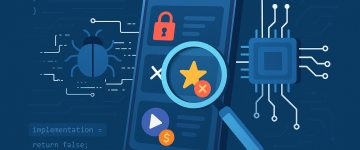Unauthorised access into remote computers has been around since the 1960s but since those early days organisations and their IT systems have become complex, and that complexity is increasing at an exponential rate, making securing those systems increasingly difficult. Defence mechanisms like firewalls, antivirus software, and monitoring systems have become essential, but they aren’t enough on their own. Cybersecurity red teams—groups of ethical hackers tasked with simulating real-world attacks—are increasingly playing a pivotal role in not only identifying vulnerabilities but also supporting incident response efforts. Red teams need to be considered as part training opportunity for defenders, and part organisational security assessment. In this post, we’ll explore how red teams can actively contribute to the incident response (IR) process, helping organizations detect, mitigate, and recover from cyber incidents more effectively.
Proactive Detection and Prevention
Red teams conduct simulations that mimic threat actors of varying degrees of sophistication, which includes phishing attacks, insider threats, and other malicious activities to evaluate the effectiveness of an organisation’s security defences. Incident response teams, also known as blue teams, are responsible for defending against and responding to active threats. As red teams can simulate a wide range of attack scenarios, they provide the blue team realistic training opportunities.
Key Contributions
- Identify vulnerabilities: By testing both technical and human vulnerabilities, red teams can uncover gaps in systems, processes and controls that attackers could exploit. These insights help incident response teams prioritize fixes and harden defences.
- Test detection capabilities: During simulations, red teams often use tactics that mimic real-world threat actor behaviour. This allows Security Operations Centres (SOCs) to evaluate whether current detection mechanisms are effective in identifying threats – ideally early on in a breach, providing a feedback loop to improve monitoring and alerting systems.
- Highlight gaps in response: Beyond detection, red teams can uncover weaknesses in the organisation’s ability to respond. These exercises help refine playbooks and improve reaction times in case of a real attack; acting like a fire drill for the organisation’s security teams.
- Simulation of real-world attacks: Red team exercises provide blue teams with exposure to the tactics, techniques, and procedures (TTPs) used by adversaries. This allows the incident response team to better understand the behaviour of attackers and improve their incident detection and response procedures.
- Drills under pressure: Simulated attacks create controlled, high-pressure situations where the blue team must react as if the incident were real. This strengthens their ability to work effectively under stress during actual incidents.
- Collaborative feedback loops: After red team exercises, post-mortem reviews and feedback sessions help blue teams understand what went wrong and what went right. This collaborative effort ensures continuous improvement in incident detection and response.
Ongoing Incident and Forensic Support
When an incident occurs, quick identification of the threat’s origin, scope, and impact is critical. Red teams, by virtue of their expertise in adversary tactics, can aid in threat hunting and digital forensics during an ongoing incident.
Key Contributions
- Insight into threat actor behaviour: Since red teams specialize in mimicking attacker methodologies, they can offer unique insights into how a real adversary might have breached the system. This includes understanding common evasion techniques, lateral movement strategies, and exfiltration tactics.
- Identification of blind spots: During live incidents, red teams can collaborate with blue teams to identify blind spots or areas where an attack might have gone unnoticed. Their understanding of complex attack chains helps guide incident responders toward detecting hidden malware or compromised accounts.
- Improving forensic analysis: Red teams can aid in digital forensics by offering a detailed understanding of how an attack might unfold. They can help analyse compromised systems, logs, and network traffic to identify indicators of compromise (IoCs) and reconstruct the attack timeline more accurately based on their experience of what steps they would take, and an understanding of the footprints various tools leave on system logs.
Fostering a Culture of Continuous Improvement
One of the biggest challenges in cybersecurity is complacency. Organisations often become overconfident after implementing new security measures or surviving an attack. Red teams, by constantly pushing the boundaries and simulating sophisticated attacks, help prevent this.
Key Contributions:
- Challenge security assumptions: Red teams encourage organisations to avoid a “set-it-and-forget-it” mindset by continually challenging the effectiveness of defences and forcing teams to stay agile and adaptable in their responses.
- Promote proactive security: By migrating to consistent tempo of red team assessments and testing organisational exposure to different Tactics, Techniques and Procedures, the incident response team can take a proactive approach rather than a reactive one. This works by helping the Blue Team conduct regular threat hunting activities, using this to improve their detections and identify weaknesses in their detections or gaps in network visibility so they can be addressed. This shift reduces the likelihood of severe incidents and ensures faster containment if they do occur.
- Drive organisational awareness: Red teams don’t just work with security professionals; they also raise awareness across the organisation. They often test phishing or social engineering schemes, helping non-technical employees understand their role in cybersecurity, which indirectly supports better incident response.
Conclusion
In the complex world of cybersecurity, red teams are invaluable in supporting and strengthening incident response efforts. By identifying vulnerabilities, training blue teams in real-world scenarios, aiding in threat hunting, and offering an initiative-taking approach to defending against modern cyber threats. Organisations that leverage both red team and blue team collaboration can better detect, respond to, and recover from cyber incidents, significantly reducing risk and minimizing damage.
Our Red Team Services: Red Teaming & Simulated Attack Archives – Prism Infosec
Have you had a breach? Contact us here for our Incident Response service: Have You Had A Security Breach? – Prism Infosec















